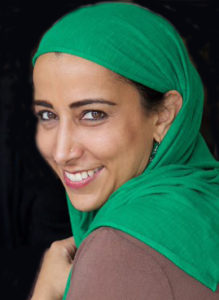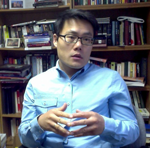student diversity
Select an item by clicking its checkbox

Higher Education Access and Choice for Latino Students: Critical Findings and Theoretical Perspectives
Date Reviewed: November 30, -0001
Patricia Pérez and Miguel Ceja published Higher Education Access and Choice for Latino Students as part of the Routledge Research in Higher Education series. Grounded in sociological studies of Latino students and their educational choices, the book’s essays highlight the multitude of challenges that confront Latino students in trying to successfully complete higher education.
The essays are split into three sections. The first is “Home, Elementary, and Secondary Context”, part two is “Political Context and Postsecondary Choice,” and part three is “Model College Access and Transition Programs.” This structure allows the reader to see how a variety of issues contribute to how and why Latinos make specific choices in higher education. The first section focuses on essays that examine cultural and familial context. In “Sixth-Grade Teacher’s Perceptions of the College-Bound Student” the essay’s authors point to how teachers’ perceptions of what constitutes a “college-bound” student and an emphasis on “good behavior” heavily shapes whether a Latino student is deemed to be worthy of being on the college prep track or not. In the essay “Constructing College Choice” the authors examine how Latino Catholic high school students are coached to understand their “worth” in terms of potential scholarship money, and the pitfalls as well as benefits of this approach.
In the second section, the essays focus on political issues affecting Latino college choice such as gender norms and expectations in “Latino/a Students’ College Destinations” and the issues that block access for undocumented students in “Rising Voices.” In the third and final section, the focus is on college access and programs that promote it, such as summer bridge programs for Latino students as described in “Supporting the College Transition Process and Early Academic Success” and in “Community Cultural Wealth and The Latino/a College Choice.” There are fourteen essays in the book; only a few are mentioned here to highlight some of the main themes.
The essays cover a wide range of issues regarding Latino student college access, and each section builds upon the previous section, starting with home life and ending with bridge programs at college itself. Overall, the essays are fairly technical, based in sociological research, and this may make it hard for some readers outside the discipline to get though them all. Yet they provide a wide-angle lens on a huge variety of issues that face Latino students in trying to even consider going to college, let alone applying to one. This book is clearly geared towards those who work in the academic field of sociology and who are exploring issues around Latino college choice, and as it is expensive, is recommended for library collections. It is an informative book for educators as it gives them a varied and broad view on all the obstacles that Latino students in higher education face and offers ideas as how to overcome those obstacles in order help more Latino students achieve success.
In my last entry, I made curricular suggestions on teaching Islam and pluralism. The curricular suggestions continue as follows: Juristic Approaches to Diversity Ethics of Disagreement: This method is an internal modality for dissent for scholars of Islam who developed a systematized approach for juristic differences. They focused on methods ...

An Empty Seat in Class: Teaching and Learning After the Death of a Student
Date Reviewed: June 16, 2015
An Empty Seat in Class emerges in the midst of the increasing deaths of young black and brown men and women around the country, and it seems rather prescient as the debate about responses to this violence emerges and takes center stage. While Ayers addresses the larger context of death and particularly the deaths of marginalized students in oppressed communities, this book is a shared meditation on grief and the role of the secondary school teacher in processing, responding to, and teaching alongside death and grief. It is shared because Ayers not only reflects on his personal stories and experiences in the classroom, but he invites a broad selection of teachers involved in secondary education to reflect on their experiences of and responses to the loss of a student.
The book is framed around the recent death of one of Ayers’s students and his community and school’s response to this loss. Ayers is clear that it is not a how-to book and rather than focus on prescriptions or even overt psychological or pedagogical advice he turns to the practice and ritual of writing and reflecting. Ayers reminds that “our salvation lies more in literature and stories than psychological and political analysis”(6) and provides us with stories, engaging literature, and reflections as the reader proceeds through the tragic life cycle of a community’s, specifically a teacher’s, response to the death of student.
The first half of the book outlines the complexity of dealing with urban violence and identifies the multiple issues faced by teachers, specifically those from vastly different socio-economic and political contexts than their students. Ayers does not shy away from the myriad ways that students and teachers respond to the “mystery” of death. He and his contributors look at the emergence of “murder economies” (23), individual and institution missteps, white privilege, and the simplistic and problematic assignation of blame and innocence that often permeates responses to death in urban communities and classrooms. While the first half of the book explicitly examines death and dying in urban, marginalized communities, the last section looks at mass school shootings and mortality in its many forms. By the end of the text, Ayers is clear that death is a specter that no one can escape and that all teachers and schools need to critically reflect on it together. Ayers emphasizes that “There are so many other ways that the terrible finger of fate points at our students. And for each of these tragedies, there is a classroom; there is a teacher” (88).
I am deeply sympathetic to Ayer’s project, and the book makes a convincing argument for this type of intervention and its format. His work succeeds as a “meditation with and for teachers” (7) during these tragic times. However, the text also suggests that there is a better way to deal with death in our school communities, and I think more explicit engagement with successful models of intervention and more context about Ayers’s school and community would strengthen the book and would add nuance and depth to its focus on and argument for the inclusion of narrative and literature in our responses to death. Overall, Ayers’s multi-layered analysis that includes reflection, memorial, research, and deep attention to literature on death and grief will be an invaluable resource for teachers and will hopefully spur additional research on the practical and pedagogical issues that arise as a result of a student’s death.

Managing and Supporting Student Diversity in Higher Education: A Casebook
Date Reviewed: March 5, 2015
Written from an Australian higher education perspective, the information in this volume could be useful to anyone engaged in teaching, supporting, or recruiting prospective students in tertiary institutions (xi). It is a worthwhile (beneficial) resource for educators desiring to transform classroom pedagogical practices and approaches into ones that are user friendly, foster social inclusion and academic excellence, and are convergent with the pluralistic student population they serve.
Drawing on the expertise of multiple authors and a carefully constructed critical educational methodology, the book is divided into three sections. The first section introduces readers to the key terms and conceptual reasoning that underpin the participatory research used throughout the text. The second section (chapters 2 through 6) consists of selected student stories or case studies that provide windows of understanding about issues students face as they engage higher education and the educational and social factors that contribute to academic success. The authors contend that student voices serve as “organic educational theorists,” and thereby reinforce the authors’ claims that inclusive pedagogies must reflect the active involvement of the learner in achieving their own learning goals.
The case studies themselves were “developed over the course of a longitudinal research project that investigated how students from diverse backgrounds succeed in higher education” (20). The students represent Australia’s multicultural population and include both on-campus and distance education students. They also represent varied social-economic, ethnic, gender, and age groups. The authors state, “While participants’ backgrounds and experiences differed, they shared interrupted educational biographies with no clear pathways into higher education” (20). The authors state that “students from diverse backgrounds require more time to fully comprehend course material, to integrate new knowledge into their existing frameworks and make sense of it”(120).
Other insights provide food for thought for anyone working with students facing both academic and cultural challenges. For example, higher education approaches in Australia often demand more classroom participation and discussion than what students may be accustomed to in their countries of origin. Hence, a degree of adjustment by students is required for success. Other case studies highlight the experience of nontraditional age students who began their studies in their forties. These case studies provide insights about the role of social obligation and self-reliance in their own learning goals. As one student stated, “I was never going to give up right from the start, because I wanted a good solid qualification that would get me a job” (213). Additional factors mentioned by students in support of their academic success included family support and encouragement, mentoring, stable finances, internships, and the usefulness of student services.
The discussion questions found at the end of every chapter are a welcome resource for educators. These questions are insightful and could easily be used in a variety of university forums to conscientize faculty. In addressing mature students, the authors raise the following question: “How do you currently support adult learners while respecting their adultness? What changes could you make in your current practice to assist mature age students to cope with study and the demands of on their time and energy from other life responsibilities and situations?” (159). In the final chapter the authors discuss the implications of the cases for university staff and conclude with a summary of suggested strategies for managing and supporting student diversity and higher education.
What make this book significant is that it not only sensitizes educators to the challenges faced by students coming from non-traditional backgrounds, but it also incorporates solid methodologies to highlight needed improvements in the classroom. Having read and experimented with the book’s ideas in my own teaching I can attest to its usefulness.
Due to the racial and religious homogeneity of my institution, which is predominantly white and Christian (the University of Findlay, in rural Ohio), I have unconsciously focused on issues of greatest concern to my students, especially in the beginning of my teaching career – and this has not included race. This ...

